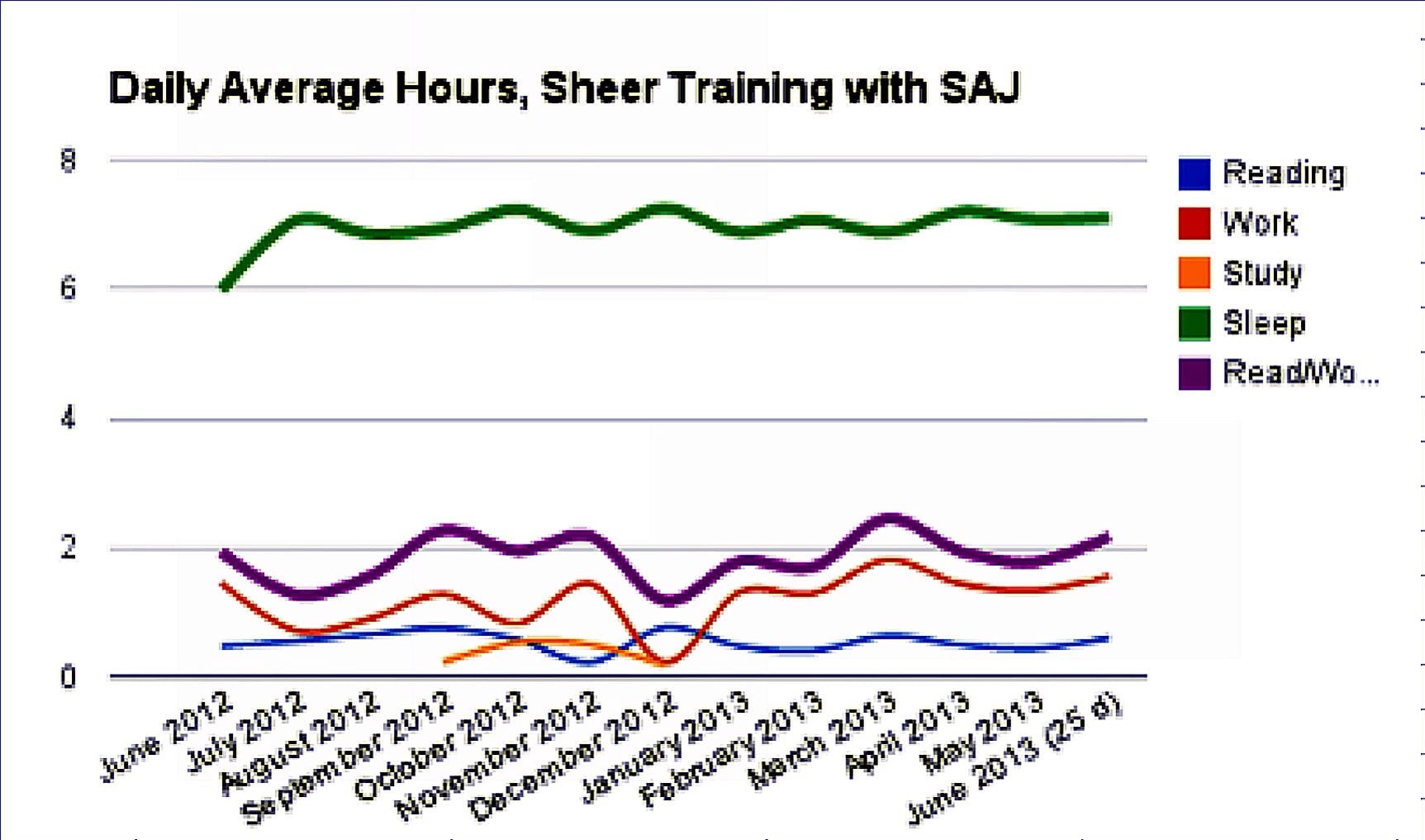The progress check comprised about ten minutes of the LORETA software simply reading my brainwaves. It's boring staring at the little green light at the bottom of the monitor for 12 minutes while reminding yourself to relax the jaw and shoulders, but necessary. Keeping jaw and shoulders relaxed and the eyelids lowered but not closed ensures the muscle tension and effort to keep the lids up (an effort you’d never notice except when sleepy) doesn't impinge on the brainwaves.
After that, we began the usual LORETA training. But since this was session #11 and next week the training parameters would be changed, it was a chance to do a one-off challenge. We turned subtitles off so that I wouldn’t read and my trainer lowered the z-score threshold from 2.4 to 2.2. Lowering the z-score or standard deviation threshold makes it more challenging to keep those really out of whack networks engaged.
Since the humans the program is based on probably didn't read closed captioning (I wonder if it included deaf or blind people…?), the Clinical Coordinator Andrea Reid-Chung wanted to see if there would be a difference in the networks caught if we turned off closed captioning, that is, would we still see receptive language or slow reader networks as being problematic without me actively reading during the screens? Also, would my reading improve more in the days following LORETA training? I don't have the answer to the latter yet, but yes receptive language and slow reading were still an issue. And even perception of letters came up because when people were introduced or translations were given on the DVD, up would pop words.
The scores can’t be compared to previous sessions directly, but there was a distinct improvement because from the first screen to the last one, even though I still had too-many seconds of staring at a black screen, I also had many-seconds of watching the DVD full screen. Yes!
No matter what my 10-minute EEG shows, I asked that anger not be included in the symptom checklist when they’re programming the new parameters because the anger focuses and brightens me into a line drive, which is what I want to keep. The anger at this point is not the brain injury beast it was and is also not triggered by every little thing. I'm not chucking telephones at walls (never did anyway, always thought what a pain to replace and too expensive) nor am I ranting for hours on end. In other words, if I had the anger levels of a few years ago before I began my hypothalamus fix, yes, we’d want to include anger in the checklist. But I don't. And especially given my inconsistent dampened emotions, what’s left of it I need to drive me into being who I am, whatever that is, and into action, whether it be writing, reading, studying, or something else.
It has been exactly a year since I first went back to the ADD Centre and had my first trial training for gamma brainwave enhancement in the CZ position. Hard to believe! I’ve been tracking the number of hours I work, read, and sleep for more than a year using the iPhone app aTimeLogger, and this week I reviewed the average daily hours for each month for the last year to see if there were any changes.
It looks like sleep is stabilizing on average, even though every night it can vary from under 6 hours to over 8. At least not too many 4- or 5-hour nights anymore. I am still inconsistent in my aggregated work/read/study hours, but it looks like after every big dip, I rise to a bit of a higher peak in the next month. And the dips aren't so dippy. The interesting thing is the months I write every day, I spend almost the exact same number of average hours working. But after this past April, I didn't have a big drop like I had after last June and November (these were my writing months). I assume that meant I didn’t crash completely once I’d finished writing the first draft of a book in April and was able to recover faster. While there is a gradual incline in the number of work and sleep hours, reading hours remain unchanged, being rather inconsistent month to month with no upward trend. Sigh.
Andrea went over my EEG progress reading and entered that along with my new symptom checklist into the LORETA neurofeedback program. The first good news was that she had to go down to 2.1 standard deviations to get enough to work on. That may explain why I did better than we expected with dropping the z-score to 2.2 from usual 2.4 during training this week. Cool.
The symptoms that rated highest were:
- Slow reading and perception of letters
- Anxiety and attention
- Symptoms of fibromyalgia and word finding
The network that had the highest standard deviation was working memory. This is the kind of memory that allows you to remember what you’re doing as you’re doing it, and would include things like keeping track of what you’re reading and building up a picture as you read. Working on that should help with my reading and comprehension. So these are the things I'll be working starting next week. And it is very comforting to know that my brain is showing objective improvement. It isn't permanent yet because I haven't had enough LORETA neurofeedback to date, but it's going in the right direction!




